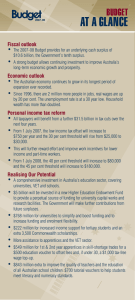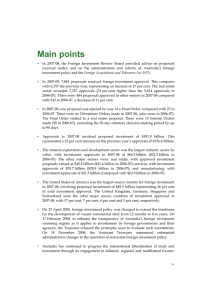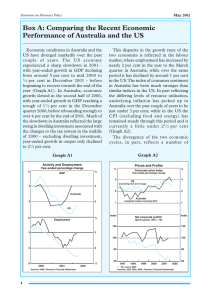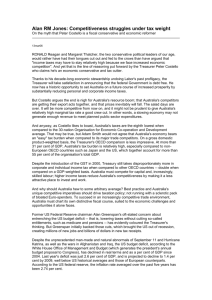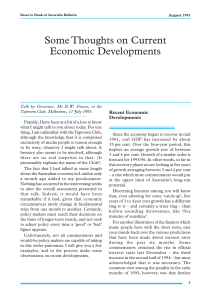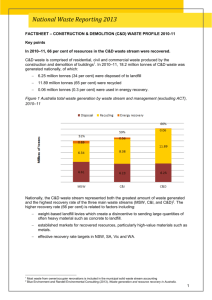Professionals Australia - Productivity Commission
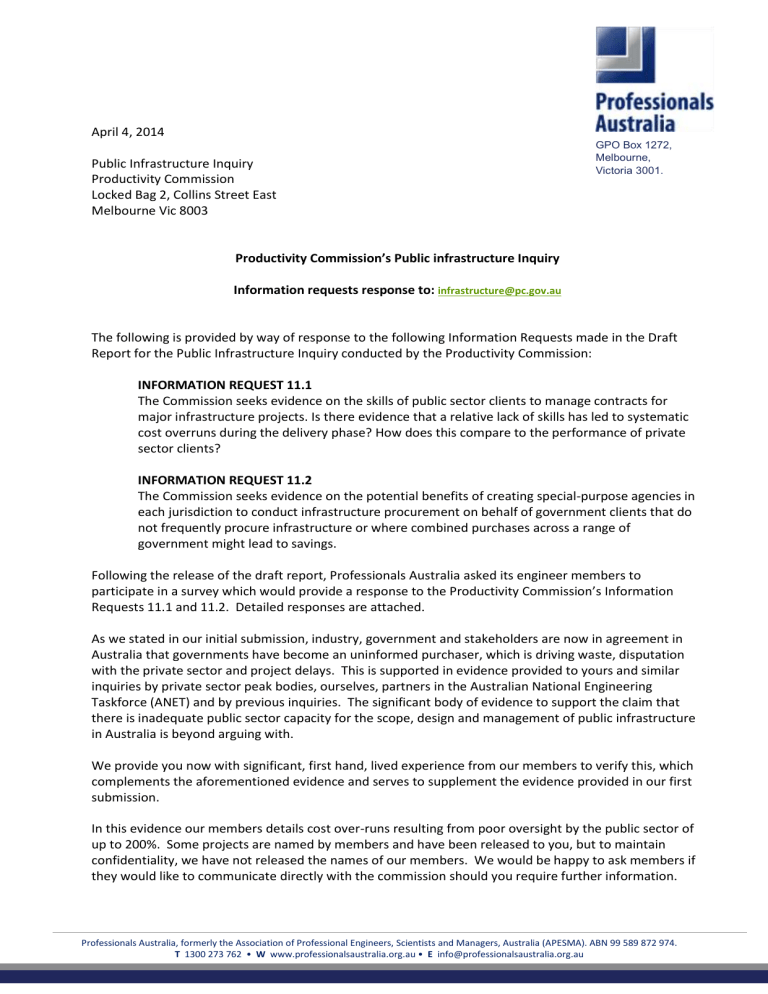
April 4, 2014
Public Infrastructure Inquiry
Productivity Commission
Locked Bag 2, Collins Street East
Melbourne Vic 8003
GPO Box 1272,
Melbourne,
Victoria 3001.
Productivity Commission’s Public infrastructure Inquiry
Information requests response to: infrastructure@pc.gov.au
The following is provided by way of response to the following Information Requests made in the Draft
Report for the Public Infrastructure Inquiry conducted by the Productivity Commission:
INFORMATION REQUEST 11.1
The Commission seeks evidence on the skills of public sector clients to manage contracts for major infrastructure projects. Is there evidence that a relative lack of skills has led to systematic cost overruns during the delivery phase? How does this compare to the performance of private sector clients?
INFORMATION REQUEST 11.2
The Commission seeks evidence on the potential benefits of creating special-purpose agencies in each jurisdiction to conduct infrastructure procurement on behalf of government clients that do not frequently procure infrastructure or where combined purchases across a range of government might lead to savings.
Following the release of the draft report, Professionals Australia asked its engineer members to participate in a survey which would provide a response to the Productivity Commission’s Information
Requests 11.1 and 11.2. Detailed responses are attached.
As we stated in our initial submission, industry, government and stakeholders are now in agreement in
Australia that governments have become an uninformed purchaser, which is driving waste, disputation with the private sector and project delays. This is supported in evidence provided to yours and similar inquiries by private sector peak bodies, ourselves, partners in the Australian National Engineering
Taskforce (ANET) and by previous inquiries. The significant body of evidence to support the claim that there is inadequate public sector capacity for the scope, design and management of public infrastructure in Australia is beyond arguing with.
We provide you now with significant, first hand, lived experience from our members to verify this, which complements the aforementioned evidence and serves to supplement the evidence provided in our first submission.
In this evidence our members details cost over-runs resulting from poor oversight by the public sector of up to 200%. Some projects are named by members and have been released to you, but to maintain confidentiality, we have not released the names of our members. We would be happy to ask members if they would like to communicate directly with the commission should you require further information.
Professionals Australia, formerly the Association of Professional Engineers, Scientists and Managers, Australia (APESMA). ABN 99 589 872 974.
T 1300 273 762 • W www.professionalsaustralia.org.au • E info@professionalsaustralia.org.au
2
Key amongst the body of evidence to support there being a lack of public sector capacity in Australia are the following:
The Infrastructure Coordinator, the statutory office holder that supports Infrastructure Australia, has said in a submission to your inquiry that in reports it prepared, “on average, 48 per cent of projects failed to meet their baseline time, cost and quality objectives.” The same report “estimated that based on:
• public and private infrastructure investment of $215 billion;
• the best case project success rate of 52 per cent; and
• with a conservative average cost overrun of 40 per cent the potential wastage of capital is in the order of $30 billion per annum”… “There are deficiencies evident at all parts of the ‘infrastructure chain’ – planning, problem identification, policy development, option identification, modelling, project identification, approvals and contracting” and that “Attracting and retaining staff qualified to manage probity processes and monitor projects will reduce the cost of projects”.
The Australian National Audit Office (2014), in their submission to the Senate Committee examining the Commonwealth’s procurement of infrastructure stated that “In some cases, procurement processes examined by the ANAO were not adequately supported by a planning process which was appropriate to the scale and risk profile of the procurement. Insufficient planning and scoping for major capital works projects has resulted in unreliable estimates and delivery timeframes”.
The Senate Inquiry, ‘The shortage of engineering and related employment skills’ (2012) stated that between 1984 and 2005 “the percentage of electricity, gas and water supply industry employees that are in the public sector dropped from 95.9 per cent to 54.7 per cent. In the construction sector this dropped from 12.2 per cent to 0.5 per cent”… “(G)overnment departments, having shed their engineering staff, now lack any real in-house engineering expertise”. “The committee received evidence suggesting that a number of infrastructure projects across Australia experience delays and cost blow outs”.
Consult Australia, in evidence to that same Senate Inquiry stated “that $6billion a year is 'wasted on disputation in projects across Australia’” and noted “that much of this expense is borne by taxpayers, as many, if not all, large projects are commissioned by governments”. And that a lack of public sector expertise meant “(c)ost blow outs are inevitable because of extensions in project delivery time and thus wages, the cost of re-engineering, changes to hardware requirements, not to mention the loss of public reputation due to late delivery of essential services”. The Australian Constructors Association
(2012) gave evidence that “professional engineers employed by public sector departments and agencies are responsible for bringing infrastructure projects to market” and quoted research they commissioned by Blake Dawson, which noted “the inexperience and insufficient levels of competence of those preparing scope documents are clearly identified… as the most significant contributors to inadequate scoping”. This same research found “52 per cent of respondents (drawn from across sectors, public and private) to Blake Dawson in 2008, “felt their project was not sufficiently and accurately scoped prior to going to market”, an increase of ten per cent from the same survey in
2006. This caused “cost overruns (61%), delayed completion (58%) and disputes (30%)”, with “26% of the $1 billion+ projects surveyed being more than $200 million over budget”.
The Building the Education Revolution Implementation Taskforce Final Report stated that “there is a correlation between states capacity to leverage existing public works capacity and their overall value for money outcomes”, specifically outline a decline in engineering capacity in the public sector and identify that the “rebuilding of capacity in several roads agencies may represent a cautionary tale… and may therefore be an indication that a significant level of in-house expertise is beneficial in ensuring that governments get value for money over the life of an asset”.
3
We commend the Productivity Commission for a number of its recommendations, including those which aim to reduce risk for the private sector and encourage movement towards early contractor involvement, much has been argued by ourselves in numerous submissions to government and by ANET in “Realising
An Innovation Economy” 2012, a report prepared for the Federal Government. We believe that private sector involvement is vital in maximizing the use of limited taxpayer funds and also in driving innovation.
Both innovation and cost effectiveness is maximized when the private sector deals with a resourced, informed purchaser in government, and when both government and contractor work together, to agreed scope and delivery frameworks, as a team.
If you have any further queries, or require further information, please do not hesitate to contact me.
Yours sincerely
Chris Walton. CEO
